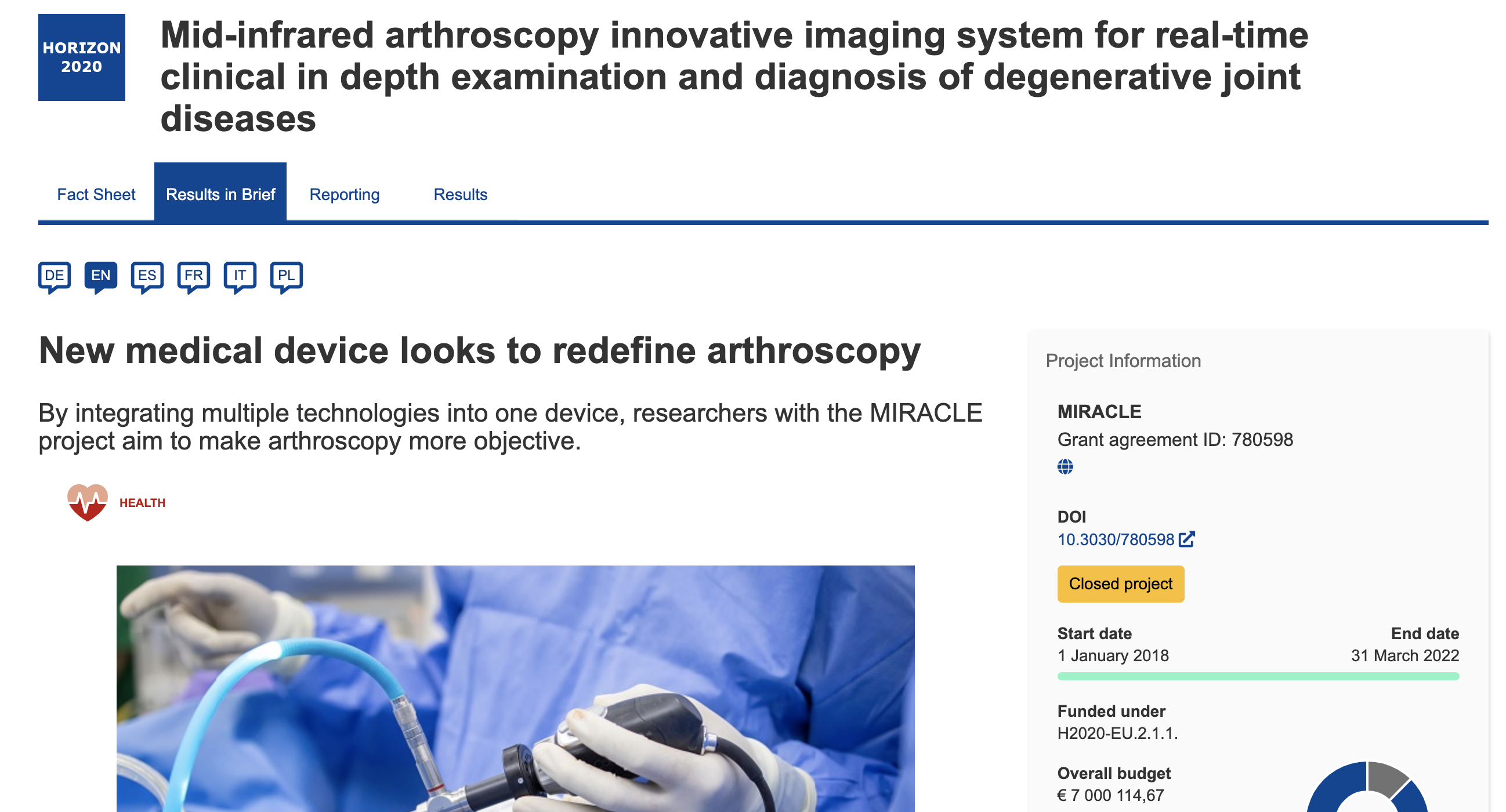Over 4 years ago, MIRACLE consortium set a very ambitious research and development project. The realized goals led directly to economically usable, partial products and new scientific openings.
Over 4 years ago, MIRACLE consortium set a very ambitious research and development project, which received the full score (15/15) and was selected by the European Comission for funding. Several key innovative elements were sucessfully achieved: 8 quantum cascade lasers (QCLs), a fiber coupling adaptor, 7 generations of hollow waveguide beam combiners, a polycrystalline fiber combiner, 4 generations of a hook shaped diamond probe, 3 generations of a loop probe, new methods for modelling, assembling of the main unit, software interface implementation and a new standard published. These realized goals led directly to economically usable, partial products and new scientific openings. However, despite all the efforts, we regrettably were unable to achieve the envisioned medical device by the end of project duration.
In science, theory and applicability do not always go hand in hand, and although the project made major breakthroughs, a number of unforeseen impasses and technical difficulties arose during the past months of the project, hindering the fully completion of the final device. To solve these challenges, the partners involved have been constantly adapting their work packages and workflow, going to the extent of self-financing additional expenses when they felt this could lead to a viable solution.
While still catching up on the time lost with the COVID-19 outbreak, the major technical challenge was when the the hook shaped probe suffered mechanical failures during the first tests in a clinical settings. Efforts to build a more robust probe took several attempts, leading us to continue the work as much as possible with a straight probe (which does not match the surgeon needs). In ideal laboratory settings (probe and fibers fixed), the tip of the probe was pressed in a defined and mechanically stable manner, onto appropriately prepared human tissue samples, while the measurements were taken. This worked extremly well, generating reproducible and reliable data. The data analysis was successful and a mathematical model for reliable correlation between QCL-based measurements data and OA grading was created, providing the proof of concept that a QCL-based device is capable to provide an objective and quantitative assessment of cartilage quality. However, at the official end of the MIRACLE project, the required robustness was not achieved, i.e. mainly the disturbing effects due to the fiber-cable movements that hindered the use of the system for the originally planned medical purpose.
Nevertheless, there are still other promising fields of application for the realized measurement technology in the area of laboratory-based ex-vivo tissue analysis, scientific research in general, and also in the industrial environment, for example in the quality monitoring in the food and beverage industry. First discussions have already been initiated regarding a self-financed continuation of the developmental work in these areas.
The MIRACLE project has yielded a considerable amount of scientific knowledge, which is also reflected in numerous publications. The business success, which is a key element for the companies involved, is unfortunately not (yet) as tangible as originally hoped. There are, however, commercially viable results that can be further exploited and developed into new applications.
Ultimately, the technological risk in this project, which also justifies the public co-financing, could not be completely controlled even with the greatest efforts of all partners within the given budget and duration. Even though the final medical device has not been achieved, new technologies with a wide range of potential applications were created and scientific limits were pushed.
The consortium is now seeking for funding for MIRACLE 2.0!
Sincerely,
MIRACLE consortium

